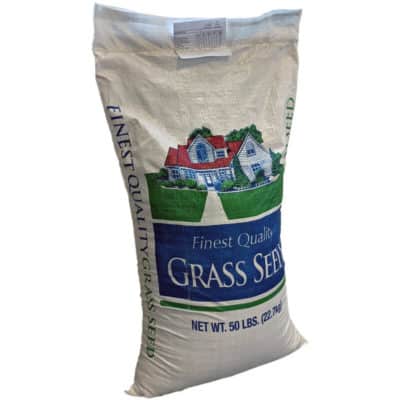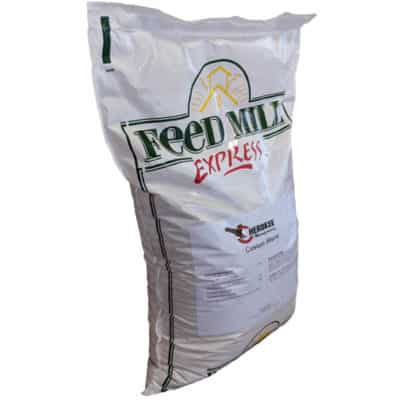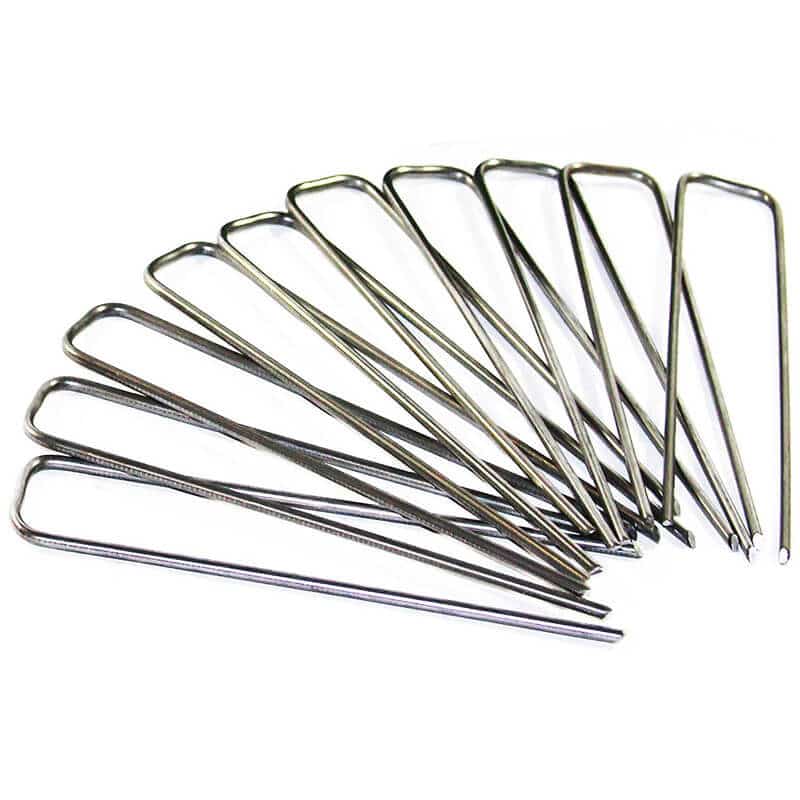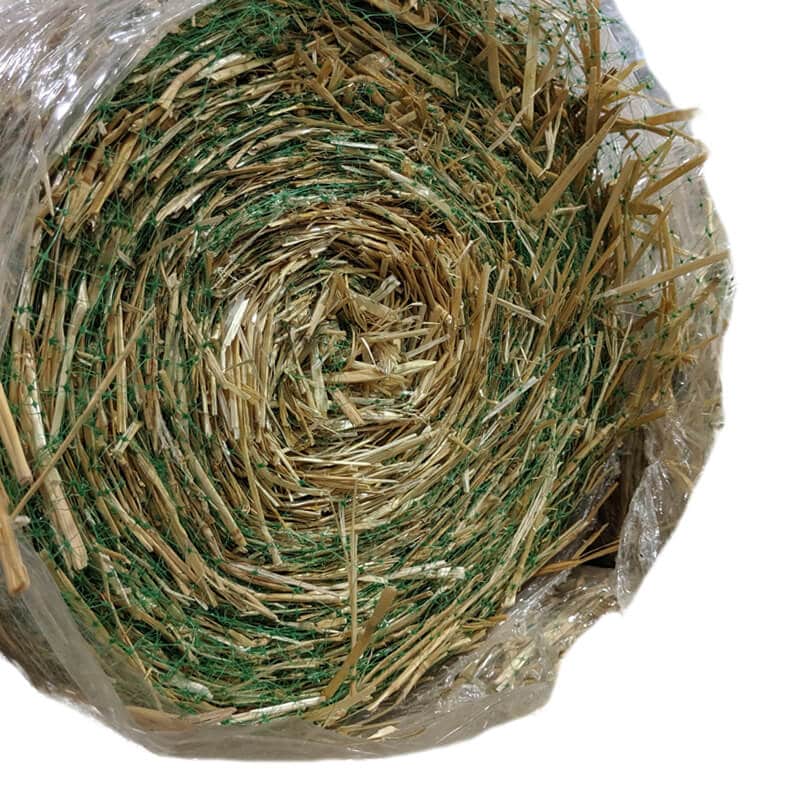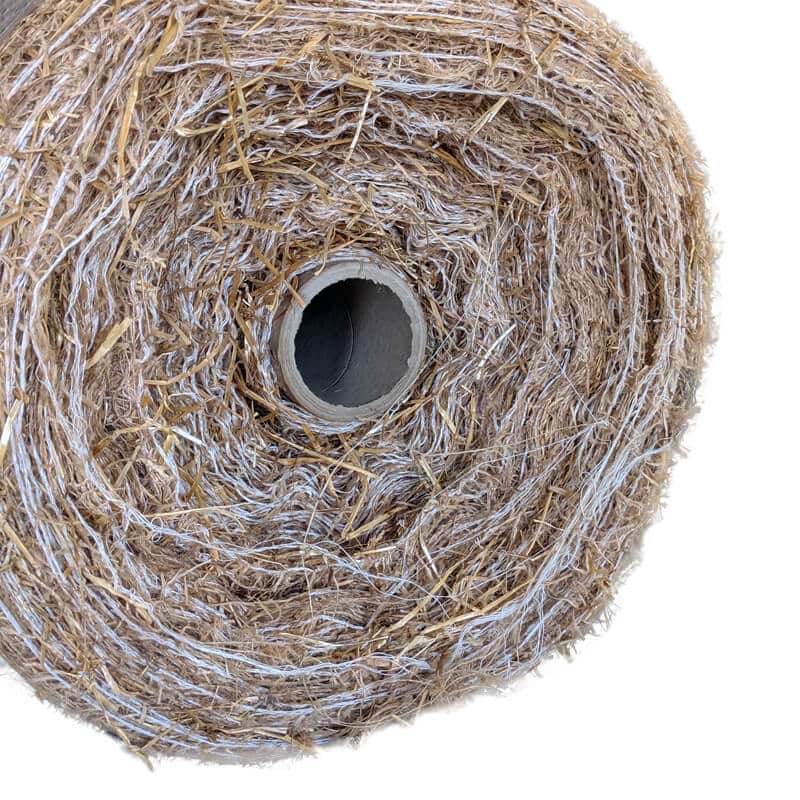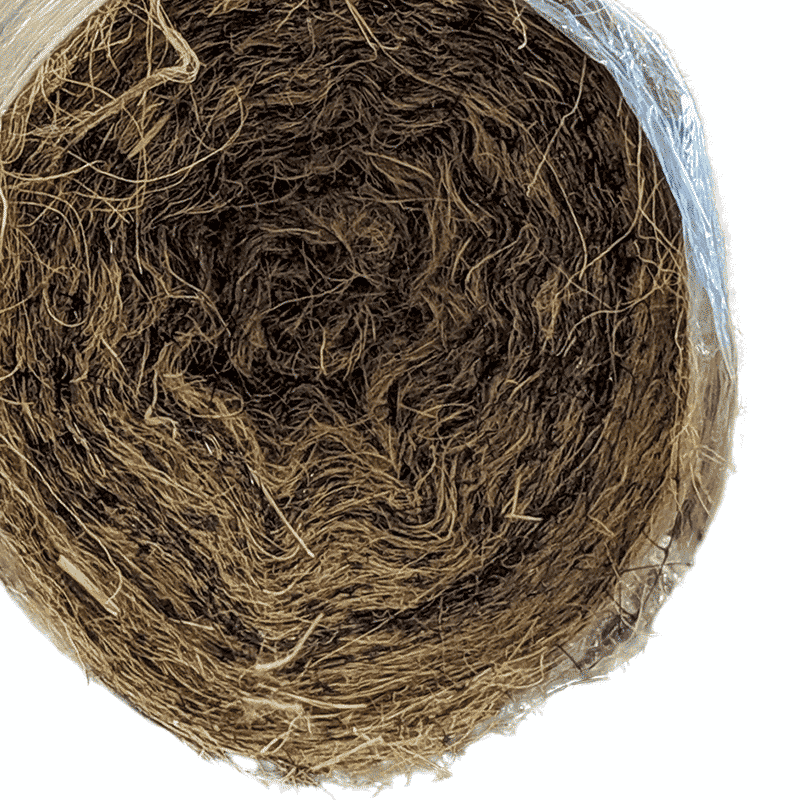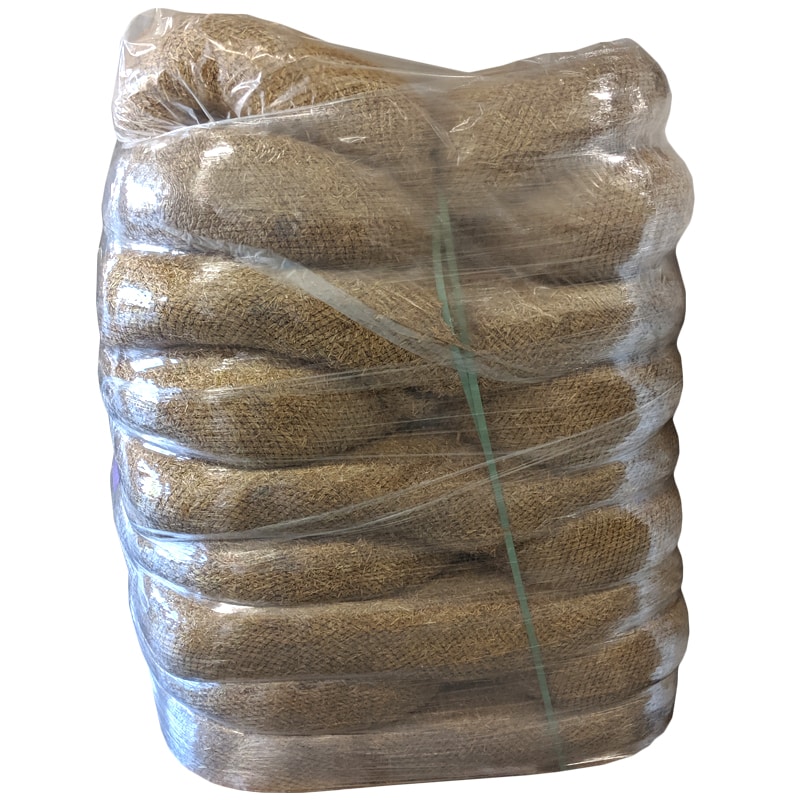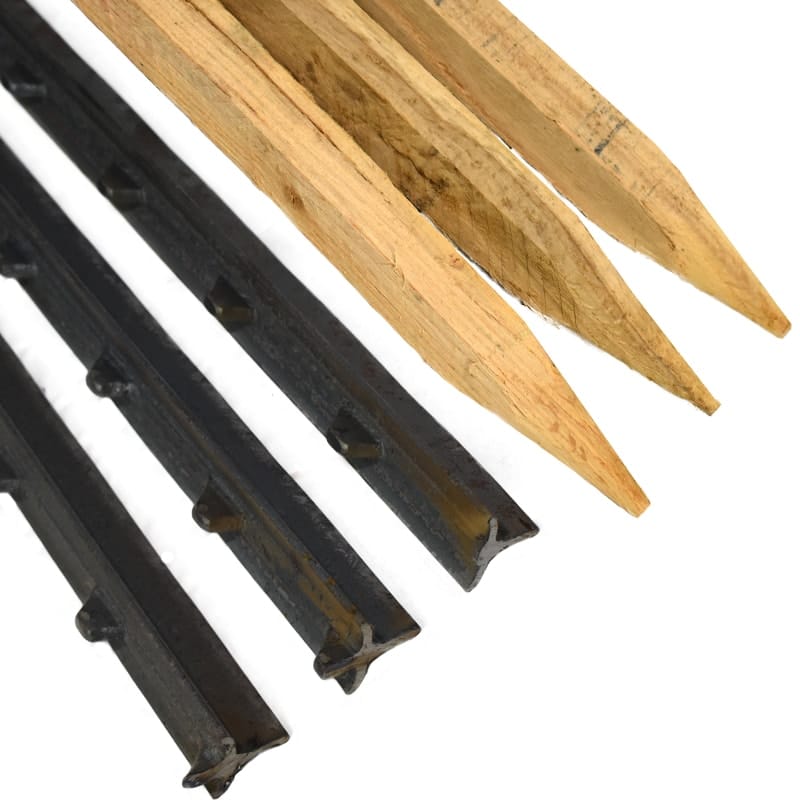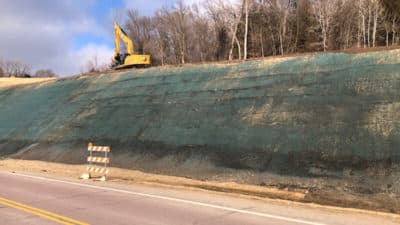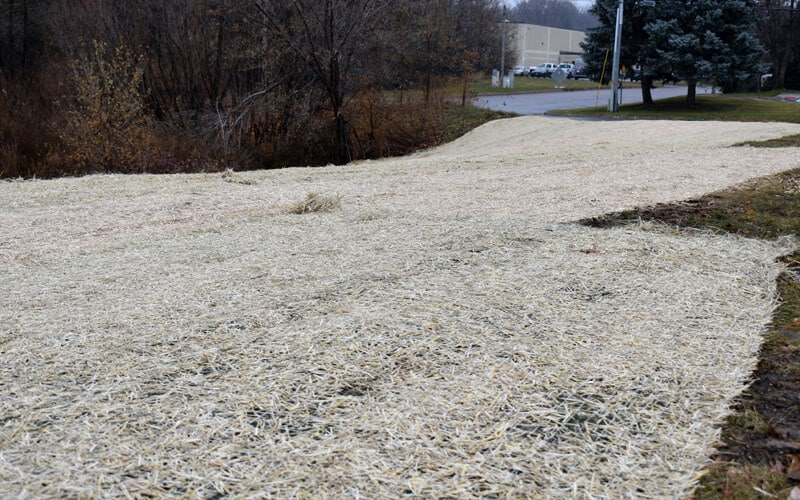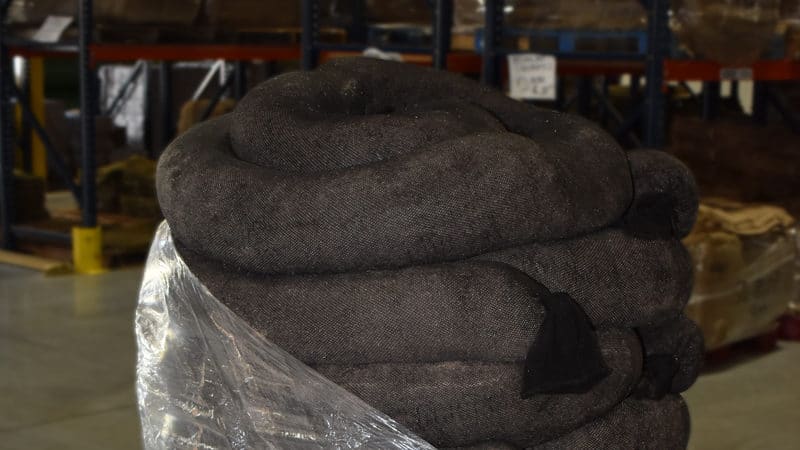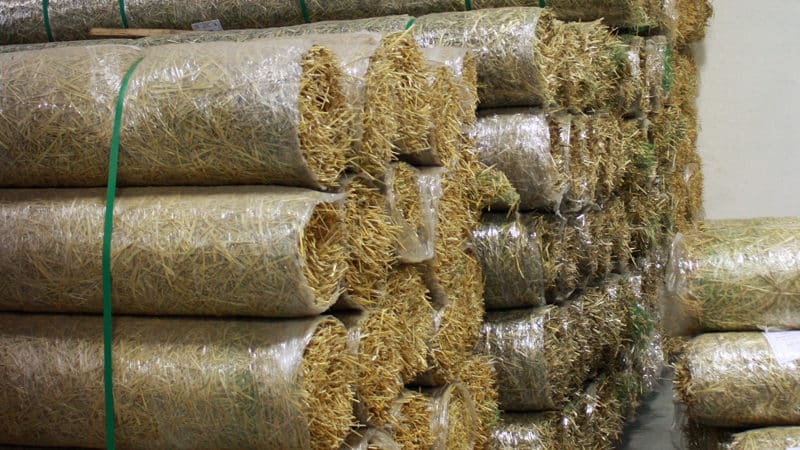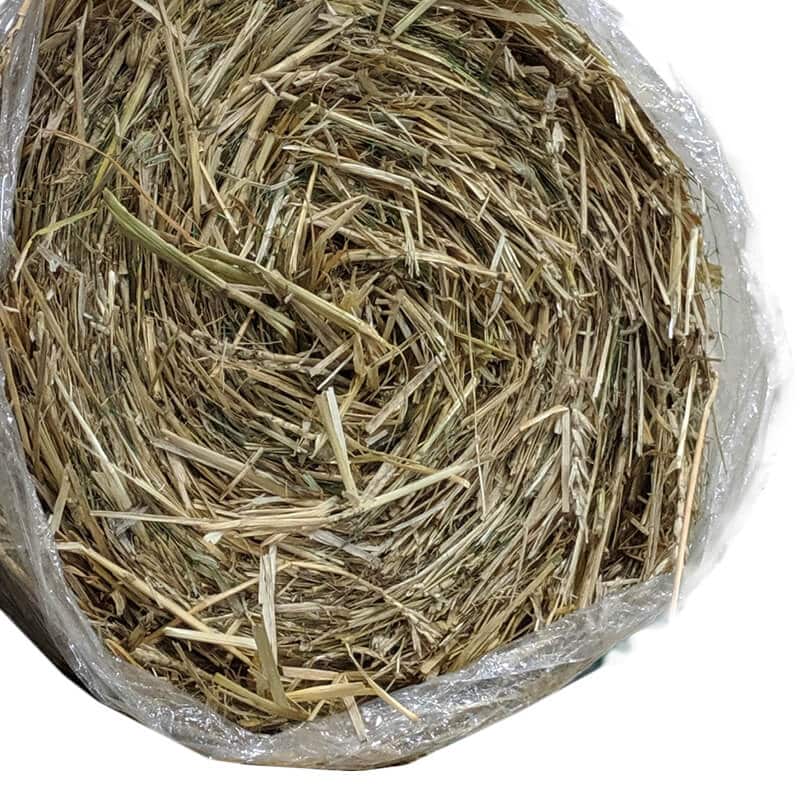
KEP-S1
KEP-S1 is a temporary rolled erosion control product composed of agricultural wheat straw mechanically stitch-bonded on a maximum of two-inch centers to a top netting. The choice in nettings are, 90-day photodegradable poly net (white), 12-month photodegradable poly net (green), and 90-day natural net which is 90-day biodegradable, (tan). Select the netting most suitable to fit your site conditions and maintenance needs.
All Cherokee Manufacturing blankets are proudly manufactured in the USA in accordance with our quality control program to ensure a uniform thickness of mulch.
Applications
- Slope Stabilization
- Soil Reinforcement
- Support in Channels
- Land Restoration Projects
- Slope or Channel Erosion Control
- Slopes up to 2:1
- Low flow channels
- Bare ground seeding
Benefits
- Prevents soil erosion from rainfall impact
- Prevents soil erosion from stormwater sheet flow
- Prevents soil erosion from concentrated channel flow
- Retains moisture in the soil to enhance seed germination and vegetation growth
- Available with a leno woven natural netting to prevent wildlife entanglement
View State Regulatory Approvals
Specifications: KEP-S1
KEP-S1 is available in 4’, 8’, and 16’ wide rolls x 112.5’ or 562.5’.
| Standard Expected Values | ||
| Tensile Strength | ASTM D6818 | 8.4lb/in x 6.7lb/in |
| Light Penetration/Cover | ASTM D6567 | 6.9%/ 93.1% |
| Mass per unit/area | ASTM D6475 | 8 OZ/SY |
| Thickness | ASTM D6525 | 250 mils |
| Water absorption | ASTM D1117 | 522% |
| Vegetative Enhancement | ASTM D7322 | 179% |
| Limiting Velocity | ASTM D6460 | 8.3 Ft/Sec |
| Limiting Shear | ASTM D6460 | 2.07 PSF |
| Cumulative C Factor | ASTM D6459 | 0.021 |
| Netting | |
| Top Netting | Green Polypropylene (w/UV Inhibitor) |
| Opening Dimensions | 3/8” x 3/8” Nominal |
Specifications: KEP-S1 Natural
KEP-S1 Natural is available in 4’, 8’, and 16’ wide rolls x 112.5’ or 562.5’.
| Standard Expected Values | ||
| Tensile Strength | ASTM D6818 | 9lb/in x 6lb/in |
| Light Penetration | ASTM D6567 | 10% |
| Mass per unit/area | ASTM D6475 | 8 OZ/SY |
| Thickness | ASTM D6525 | 350 mils |
| Water absorption | ASTM D1117 | 400% |
| Netting | |
| Top Netting | Leno Woven Biodegradable Jute Net |
| Opening Dimensions | 1/2” x 1/2” Nominal |
Specifications: KEP-S1RD
KEP-S1RD is available in 4’, 8’, and 16’ wide rolls x 112.5’ or 562.5’.
| Standard Expected Values | ||
| Tensile Strength | ASTM D6818 | 9lb/in x 3lb/in |
| Light Penetration | ASTM D6567 | 19% |
| Mass per unit/area | ASTM D6475 | 8 OZ/SY |
| Thickness | ASTM D6525 | 350 mils |
| Water absorption | ASTM D1117 | 400% |
| Netting | |
| Top Netting | White Polypropylene (not UV stable) |
| Opening Dimensions | 3/8” x 3/8” Nominal |
Don’t forget the Grass Seed, Fertilizer, and Sod Staples
See the installation in action
Commonly asked questions:
Single net straw blankets are suitable for use on gentle slopes and channels where erosion control is required for up to 12 months, based on precipitation, sunshine, and environmental factors, as well as whether vegetation is intended to replace or operate in tandem with the blanket. They’re mainly utilized to slow down water flow, prevent silt and erosion, and promote re-vegetation. Furthermore, these single net straw blankets aid in the germination of newly planted seeds by shielding seeds from erosion and reducing weed growth. They’re widely used on riverbeds, hills, culvert inlets and outfalls, and channel and ditch linings.
Many business owners in the horticultural industry use single net straw blankets. They’re also used by the city to re-grow grass in areas where the grass has died due to weather, or wildfires. Landscaping artists utilize these as well.
Erosion Control using a single net straw blanket is recommended for use on mild gradients and channels where erosion control is required for up to 12 months, depending on moisture, light, environmental conditions, and whether vegetation is intended to replace or operate in conjunction with the blanket.
Straw blankets decompose naturally in a shorter amount of time than cotton blankets (typically six months to two years). They’re made for low slopes, little water flow, and generally moderate circumstances. Straw blankets are designed for slopes of 3:1 or 2:1.
and the inside. Typically, these blankets include an inside material that is held in place by netting on the outside. (Straw, straw with coco mixes, or Coir could be used as the interior material.)
Straw is still useful for assisting grass seeds in germinating and taking root, although it, like grass seed, is susceptible to blowing away. If you do choose to mow over it, wait until you can cut over the grass before doing so, or you risk taking out the newly germinated grassroots and all.
Even after the grass seeds have germinated, you shouldn’t have to remove the straw since it will decay by itself. Raking it off puts the roots and leaves of the young plants at risk. If you decide to wait, keep a watch out for weeds growing among your grass seeds.
Request A Quote
Wholesale and Bulk Quantity Requests Only
You can also call us at 866-630-1514
or setup a Credit Application

